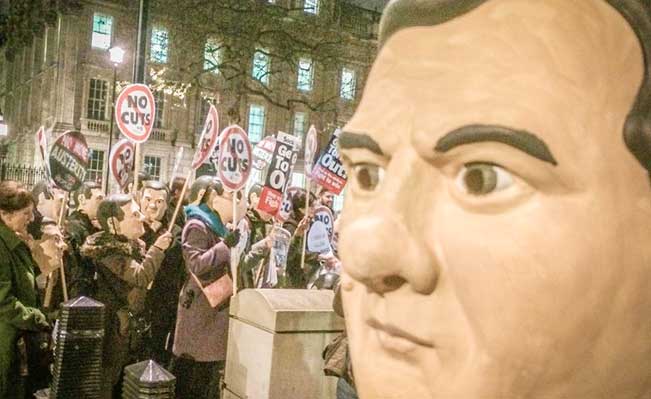 People's Assembly protest at Downing Street ahead of the Statement. Photo: Jim Thatcher
People's Assembly protest at Downing Street ahead of the Statement. Photo: Jim Thatcher
James Meadway gets behind the spin with five insights about Osborne’s Autumn statement
1 George Osborne has spectacularly missed his original deficit target. The June 2010 forecast for the deficit (the gap between government taxes and government spending) was £40bn. Today, it is £91bn. In four years, Osborne has borrowed a colossal £517bn.
2 The deficit target has been missed largely because of falling wages. Despite economic growth over the last two years, most people’s real earnings have continued to fall. But if real earnings are falling, tax revenues will be pulled down, too. In addition, corporation tax revenues have fallen 14% since 2010, helped along by cutting taxes.
3The government’s own forecasts expect average real wages to continue to fall until 2017. Using the older Retail Prices Index (RPI) measure of inflation, the OBR does not expect average real wages to improve for another two years – despite continued economic growth.
4Tax and benefit changes mean the poorest 40% lose out. Tucked away in the documents, the Treasury’s distributional analysis shows the poorest 40% of Britons will lose out from tax and benefit changes (Chart 2.1, p20). For the poorest one-fifth, that means losing £441 a year.
5We are less than halfway through the cuts, even on optimistic forecasts. To meet his deficit target, the OBR thinks that we still have 60% of spending cuts to come (para 1.7). This is based on assuming sharp falls in debt interest, and rapid rises in tax revenues – neither of which are guaranteed. If all goes according to the plan, by 2019 we will have total public spending “at its lowest level in 80 years”.

